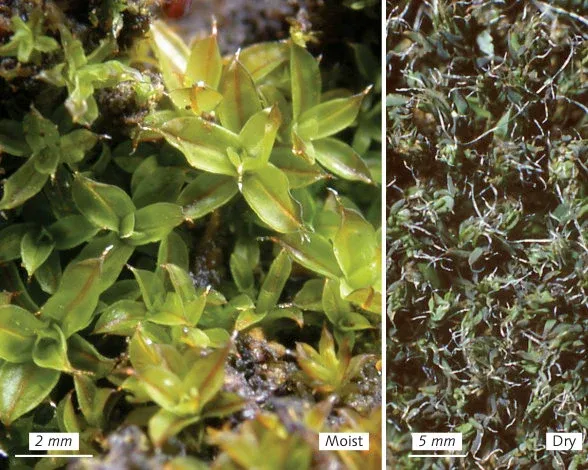
215109.jpg from: https://inpn.mnhn.fr/espece/cd_nom/434245
Introduction

Syntrichia-virescens-2.jpg from: https://www.britishbryologicalsociety.org.uk/learning/species-finder/syntrichia-virescens/
In the vast and captivating world of bryophytes, one particular moss species stands out for its resilience and adaptability – the Syntrichia virescens (De Not.) Ochyra. Belonging to the Pottiaceae family, this unassuming yet remarkable plant has captured the hearts of moss enthusiasts worldwide. Let’s delve into the fascinating realm of this virescens marvel, exploring its unique characteristics, global distribution, and ecological significance.
Background
Before we dive into the intricacies of Syntrichia virescens, it’s essential to understand the broader context of bryophytes. These non-vascular plants, which include mosses, liverworts, and hornworts, are often overlooked but play a crucial role in various ecosystems. They are among the oldest land plants on Earth, dating back to the Paleozoic era, and have evolved remarkable survival strategies that allow them to thrive in diverse environments.
Main Content

il_fullxfull.3551949008_epg0.jpg from: https://www.thebryophytanursery.com/listing/1147041783/rare-woodcut-moss-syntrichia-virescens
Morphology and Identification
Syntrichia virescens is a small, acrocarpous moss that forms dense, cushion-like tufts or mats. Its leaves are lanceolate to ovate-lanceolate, with a distinctive

146931.jpg from: https://www.calflora.org/app/taxon?crn=14227
costa (midrib) that extends beyond the leaf apex, forming a short hair point. The leaf margins are often recurved, and the leaf cells are papillose, giving the plant a rough texture. When dry, the leaves are tightly contorted, but upon rehydration, they quickly unfurl, revealing their vibrant green hue.

il_fullxfull.3599588459_c8rd.jpg from: https://www.thebryophytanursery.com/listing/1147041783/terrarium-houtsnijmos-syntrichia
Global Distribution and Habitat
Syntrichia virescens is a cosmopolitan species, found on every continent except Antarctica. It thrives in a wide range of habitats, from urban areas to natural environments, showcasing its remarkable adaptability. This moss can be found growing on soil, rocks, tree bark, and even concrete surfaces, often in areas with moderate disturbance or human activity.
Ecological Roles and Adaptations
Despite its diminutive size, Syntrichia virescens plays a vital role in various ecosystems. As a pioneer species, it helps stabilize and enrich soils, creating favorable conditions for other plants to establish themselves. Additionally, this moss serves as a microhabitat for numerous invertebrates, providing shelter and food sources.
One of the most remarkable adaptations of Syntrichia virescens is its ability to tolerate desiccation. During dry periods, the moss can enter a state of dormancy, curling its leaves tightly to minimize water loss. Once moisture becomes available, it rapidly rehydrates and resumes its metabolic activities, showcasing its incredible resilience.
Case Studies/Examples
Syntrichia virescens has been the subject of numerous scientific studies, highlighting its ecological significance and adaptations. For instance, researchers have investigated the moss’s ability to accumulate heavy metals, making it a potential biomonitor for environmental pollution. Additionally, its desiccation tolerance has been extensively studied, providing insights into the mechanisms that allow it to survive in arid environments.

il_fullxfull.3599586467_snh7.jpg from: https://www.thebryophytanursery.com/listing/1147041783/terrarium-woodcut-moss-syntrichia
Technical Table

medium.jpeg from: https://www.inaturalist.org/taxa/461391-Syntrichia-virescens

e874a9c5910adc856f0ec59855257f06.jpg from: https://pl.pinterest.com/pin/394416879850946122/

180px-Syntrichia_virescens_(b%2C_144634-480945)_9640.JPG from: https://commons.wikimedia.org/wiki/Syntrichia_virescens
| Characteristic | Description |
|---|---|
| Family | Pottiaceae |
| Genus | Syntrichia |
| Species | virescens |
| Growth Form | Acrocarpous, cushion-like tufts or mats |
| Leaf Shape | Lanceolate to ovate-lanceolate |
| Leaf Margin | Often recurved |
| Leaf Cells | Papillose |
| Costa | Extending beyond leaf apex, forming a hair point |
| Desiccation Tolerance | High |
Conclusion
Syntrichia virescens is a true marvel of the bryophyte world, showcasing remarkable adaptations and ecological significance. From its ability to colonize diverse habitats to its role in soil stabilization and microhabitat provision, this unassuming moss deserves our admiration and appreciation. As we continue to explore the intricate tapestry of life on our planet, let us ponder this thought-provoking question: What other wonders lie hidden within the realm of bryophytes, waiting to be discovered and celebrated?

16649276587_d5a07f6c25_b.jpg from: https://www.flickr.com/photos/12639178@N07/16649276587/